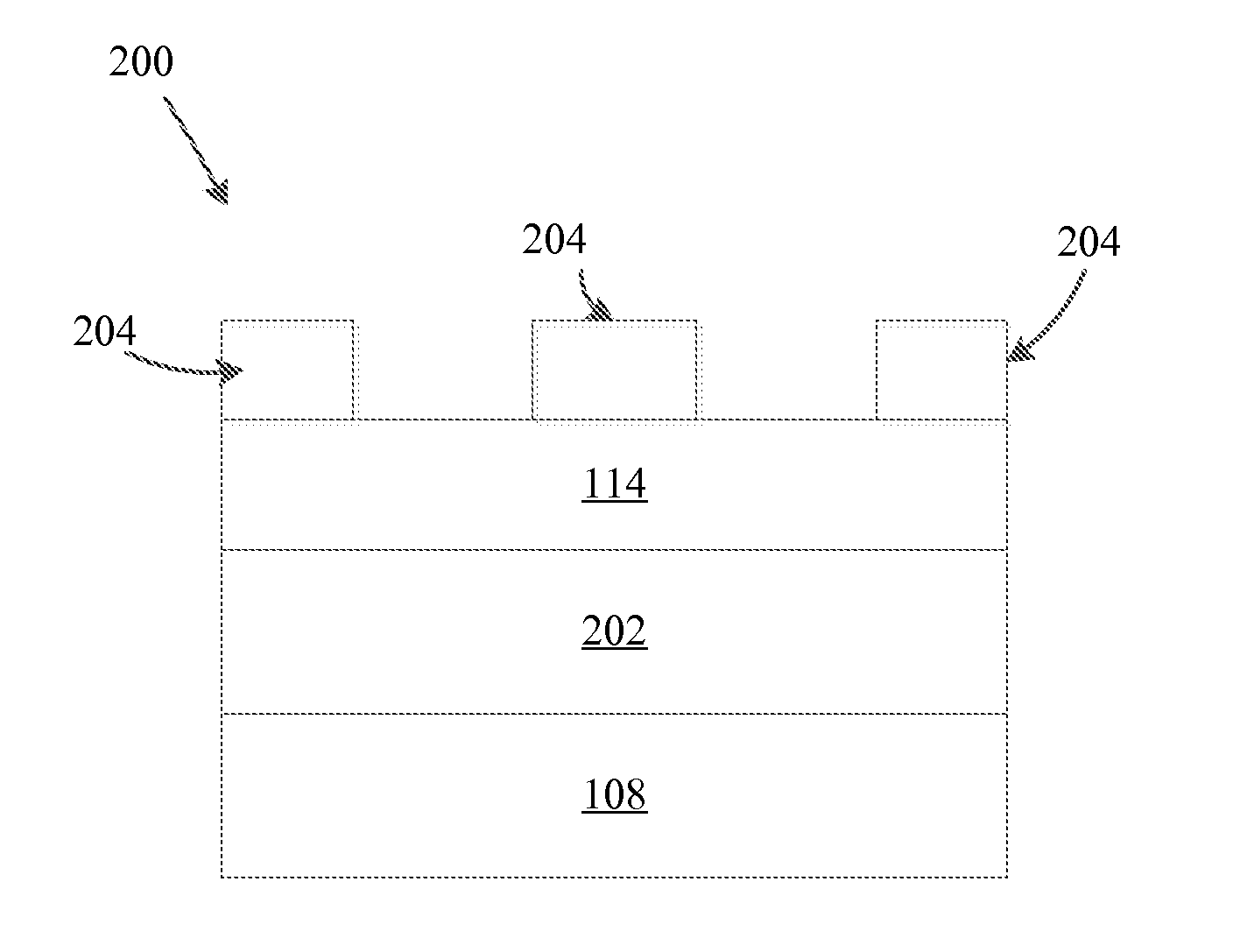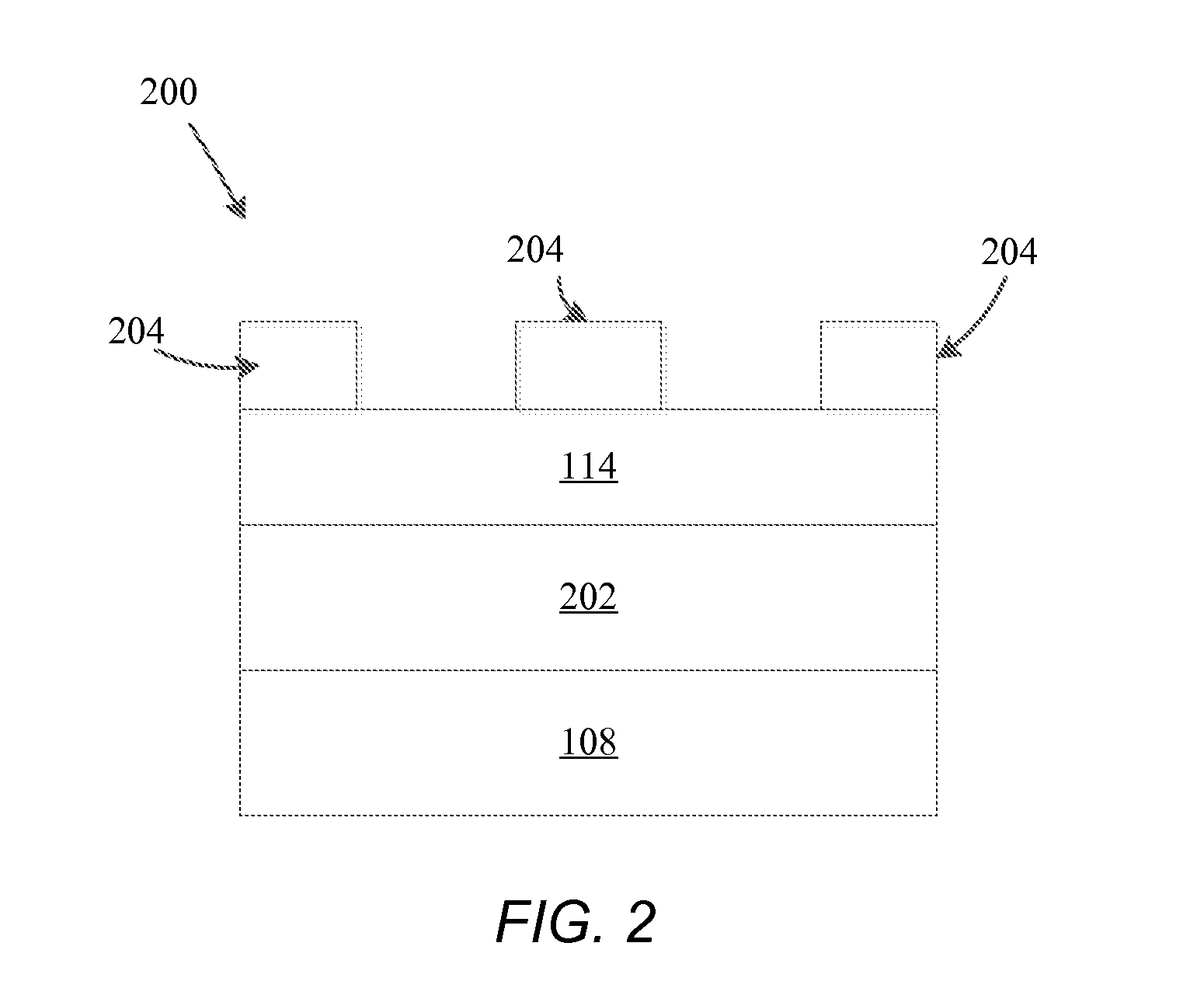Use of ambient-robust solution processing for preparing nanoscale organic ferroelectric films
a technology of organic ferroelectric films and ambient-robust solution, which is applied in the direction of coatings, solid-state devices, chemical vapor deposition coatings, etc., can solve the problems of rough film surface, hazy/reduced transparency, rough film surface, etc., to achieve the effect of reducing the likelihood of phase separation, increasing the surface roughness of the film, and achieving optical properties. desirable
- Summary
- Abstract
- Description
- Claims
- Application Information
AI Technical Summary
Benefits of technology
Problems solved by technology
Method used
Image
Examples
example 1
Preparation of Ferroelectric Thin Films
[0092]A ferroelectric film of the present invention was fabricated using the following method.
[0093]Sample 1. Deposition of PVDF on Glass Substrate Using an 80° C. Solution. A PVDF polymer (0.082 g) was added to dimethyl formamide (DMF) (1 mL) and heated to 80° C. to solubilize the PVDF polymer in the solvent. The PVDF / solvent solution was maintained 80° C. and spun-casted on a glass substrate at 4000 rpm at a relative humidity of 50% to form a film on the glass substrate. The PVDF film had a thickness of 250 nm.
[0094]Sample 2. Deposition of PVDF on Glass Substrate Using a 100° C. Solution. A PVDF polymer (0.082 g) was added to DMF (1 mL) and heated to 100° C. to solubilize the PVDF polymer in the solvent. The PVDF / solvent solution was maintained at 100° C. and spun-casted on a glass substrate at 4000 rpm at a relative humidity of 50% to form a film on the glass substrate. The PVDF film had a thickness of 320 nm.
[0095]Sample 3. Deposition of PV...
example 2
Preparation of Comparative Thin Film Samples
[0096]Comparative Sample C1. Deposition of PVDF on Glass Substrate Using a Room Temperature Solution. A PVDF polymer (0.082 g) was added to DMF (1 mL). The PVDF / solvent solution was spun-casted on a glass substrate at 4000 rpm at a relative humidity of 50% to form a film on the glass substrate. The PVDF film had a thickness of 180 nm.
[0097]Comparative Sample C2. Deposition of PVDF on Glass Substrate Using a 60° C. Solution. A PVDF polymer (0.082 g) was added to DMF (1 mL) and heated to 60° C. to solubilize the PVDF polymer in the solvent. The PVDF / solvent solution was maintained at 60° C. and spun-casted on a glass substrate at 4000 rpm to form a film on the glass substrate. The PVDF film had a thickness of 210 nm.
[0098]Comparative Sample C3. Preparation of a 400 nm Film on a Glass Substrate. A PVDF polymer (0.097 g) was added to DMF (1 mL) and heated to 100° C. to solubilize the PVDF polymer in the solvent. The PVDF / solvent solution was m...
example 3
Testing of Films on Glass Substrate
[0102]Samples A-C were analyzed for optical transparency and surface roughness. Optical transparency was determined by visual inspection of a logo as seen through Samples 1-3 and using UV-visible absorption spectroscopy.
[0103]Optical Transparency. FIG. 11 depict optical images of a material having the King Abdullah University Science and Technology (KAUST) logo in English and Arabic as viewed through the Samples 1-3. FIGS. 12A and 12B are graphs absorbance (a.u.) versus wavelength (nm) on a double logarithmic scale of Samples 1-3 and Comparative samples C1-C3. As shown in FIG. 11, the symbols and words of the KAUST logo were sharper and had more clarity for Samples 1-3 as compared to Comparative samples C1 and C2 (data lines C1 at room temperature, data line C1 at 60° C.). Referring to FIG. 12A, Samples 1-3 (data lines S1 at 80° C., S2 at 100° C., and S3 at 120° C.) had an absorbance of less than 10−1 a.u, and demonstrated interference fringes betw...
PUM
| Property | Measurement | Unit |
|---|---|---|
| boiling point | aaaaa | aaaaa |
| thickness | aaaaa | aaaaa |
| thickness | aaaaa | aaaaa |
Abstract
Description
Claims
Application Information
 Login to View More
Login to View More - R&D
- Intellectual Property
- Life Sciences
- Materials
- Tech Scout
- Unparalleled Data Quality
- Higher Quality Content
- 60% Fewer Hallucinations
Browse by: Latest US Patents, China's latest patents, Technical Efficacy Thesaurus, Application Domain, Technology Topic, Popular Technical Reports.
© 2025 PatSnap. All rights reserved.Legal|Privacy policy|Modern Slavery Act Transparency Statement|Sitemap|About US| Contact US: help@patsnap.com



